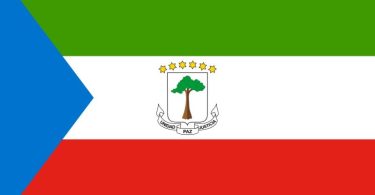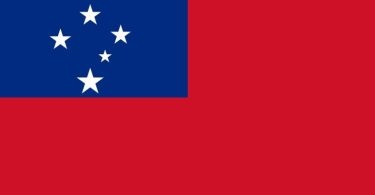SCHEDULE 1. Union Legislative List (Refer to Section 96)
1. Union Defence and Security Sector
- Defence of the Republic of the Union of Myanmar and every part thereof and preparation for such defence;
- Defence and Security industries;
- Arms, ammunition and explosives including biological and chemical weapons;
- Atomic energy, nuclear fuel and radiation and mineral resources essential to its production;
- Declaration of war and conclusion of peace;
- Stability, peace and tranquility of the Union and prevalence of law and order; and
- Police force.
2. Foreign Affairs Sector
- Representatives of the diplomatic, consular and other affairs;
- United Nations;
- Participation in international, regional and bilateral conferences, seminars, meetings, associations and other organizations and implementation of resolutions thereof;
- Conclusion and implementation of international and regional treaties, agreements, conventions and bilateral agreements and treaties;
- Passports and identification certificates;
- Visas, admission into the Republic of the Union of Myanmar, stay, departure, immigration and deportation; and
- Extradition and request for extradition.
3. Finance and Planning Sector
- The Union Budget;
- The Union Fund;
- Currency and coinage;
- The Central Bank of Myanmar and financial institutions;
- Foreign exchange control;
- Capital and money markets;
- Insurance;
- Income tax;
- Commercial tax;
- Stamp duty;
- Customs duty;
- Union lottery;
- Tax appeal;
- Services of the Union;
- Sale, lease and other means of execution of property of the Union;
- Disbursement of loans from the Union Funds;
- Investment of the Union Funds;
- Domestic and foreign loans;
- Acquisition of property for the Union; and
- Foreign aid and financial assistance.
4. Economic Sector
- Economy;
- Commerce;
- Co-operatives;
- Corporations, boards, enterprises, companies and partnerships;
- Imports, exports and quality control thereon;
- Hotels and lodging houses; and
- Tourism.
5. Agriculture and Livestock Breeding Sector
- Land administration;
- Reclamation of vacant, fallow and virgin lands;
- Settlements and land records;
- Land survey;
- Dams, embankments and irrigation works managed by the Union;
- Meteorology, hydrology and seismic survey;
- Registration of documents;
- Mechanized agriculture;
- Agricultural research;
- Production of chemical fertilizers and insecticides;
- Marine fisheries; and
- Livestock proliferation, prevention and treatment of diseases and research works.
6. Energy, Electricity, Mining and Forestry Sector
- Petroleum, natural gas, other liquids and substances declared by the Union Law to be dangerously inflammable;
- Production and distribution of electricity of the Union;
- Minerals, mines, safety of mine workers, and environmental conservation and restoration;
- Gems;
- Pearls;
- Forests; and
- Environmental protection and conservation including wildlife, natural plants and natural areas.
7. Industrial Sector
- Industries to be undertaken by the Union level;
- Industrial zones;
- Basic standardization and specification for manufactured products;
- Science and technology and research thereon;
- Standardization of weights and measures; and
- Intellectual property such as copyrights, patents, trademarks and industrial designs.
8. Transport, Communication and Construction Sector
- Inland water transport;
- Maintenance of waterways;
- Development of water resources and rivers and streams;
- Carriage by sea;
- Major ports;
- Lighthouses, lightships and lighting plans;
- Shipbuilding, repair and maintenance;
- Air transport;
- Air navigation, control and airfields construction;
- Land transport;
- Railways;
- Major highways and bridges managed by the Union;
- Posts, telegraphs, telephones, fax, e-mail, internet, intranet and similar means of communication; and
- Television, satellite communication, transmission and reception, and similar means of communication and housing and buildings.
9. Social Sector
- Educational curricula, syllabus, teaching methodology, research, plans, projects and standards;
- Universities, degree colleges, institutes and other institutions of higher education;
- Examinations prescribed by the Union;
- Private schools and training;
- National sports;
- National health;
- Development of traditional medicinal science and traditional medicine;
- Charitable hospitals and clinics and private hospitals and clinics;
- Maternal and child welfare;
- Red cross society;
- Prevention from adulteration, manufacture and sale of foodstuffs, drugs, medicines and cosmetics;
- Welfare of children, youths, women, the disabled, the aged and the homeless;
- Relief and rehabilitation;
- Fire Brigade;
- Working hours, resting-hours, holidays and occupational safety;
- Trade disputes;
- Social security;
- Labour organizations;
- Managements by the Union, the following:
- Ancient culture or historical sites, buildings, monuments, records, stone inscriptions, ink inscriptions on stucco, palm-leaf parabaiks, handwritings, handiworks, inanimate objects and archaeological works;
- Museums and libraries.
- Literature, dramatic arts, music, traditional arts and crafts, cinematographic films and videos; and
- Registration of births and deaths.
10. Management Sector
- General administration;
- Administration of town and village land;
- Tenants;
- Narcotic drugs and psychotropic substances;
- Union secrets;
- Associations;
- Prisons;
- Development of border areas;
- Census;
- Citizenship, naturalization, termination and revocation of citizenship, citizenship scrutiny and registration; and
- Titles and honours.
11. Judicial Sector
- Judiciary;
- Lawyers;
- Criminal Laws and procedures;
- Civil Laws and procedures including contract, arbitration, actionable wrong, insolvency, trust and trustees, administrator and receiver, family laws, guardians and wards, transfer of property and inheritance;
- Law of Evidence;
- Limitation;
- Suit valuation;
- Specific relief;
- Foreign jurisdiction;
- Admiralty jurisdiction; and
- Piracies, crimes committed in international waters or in outer space and offences against the international law on land or in international waters or in outer space.




